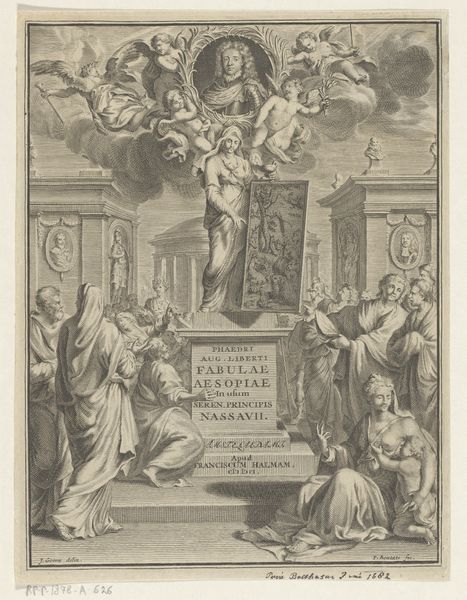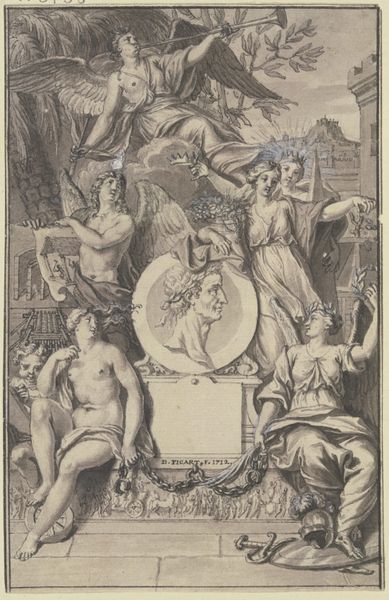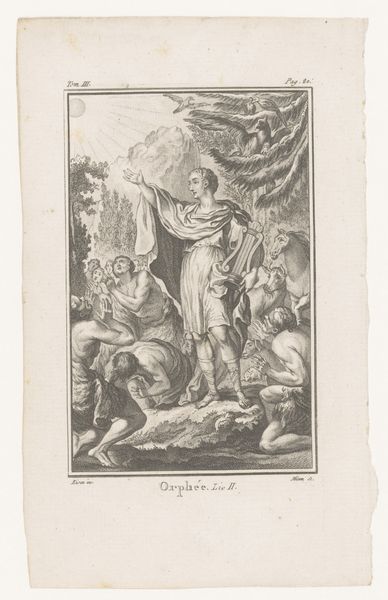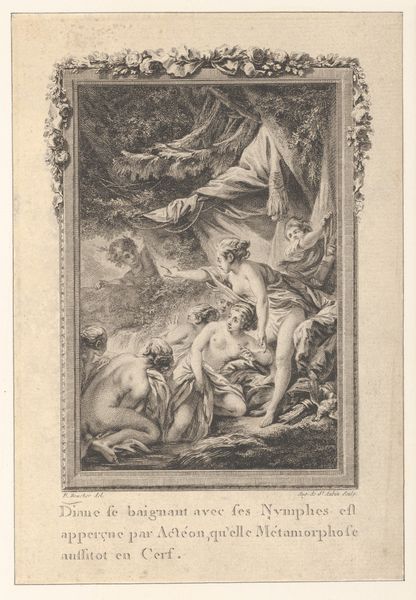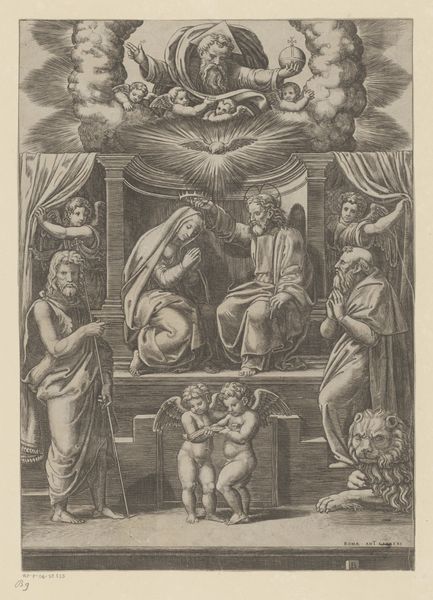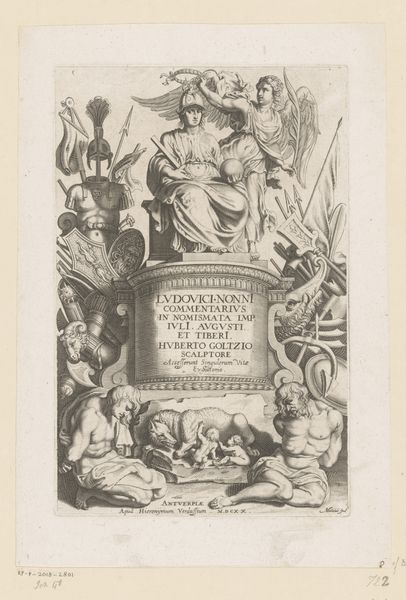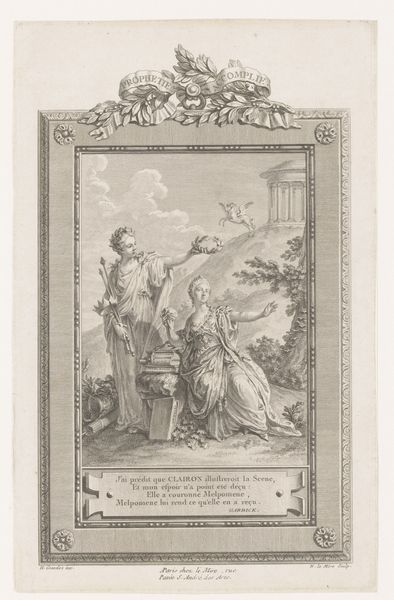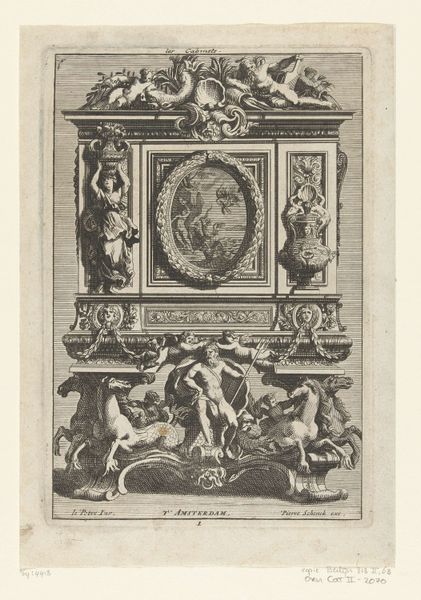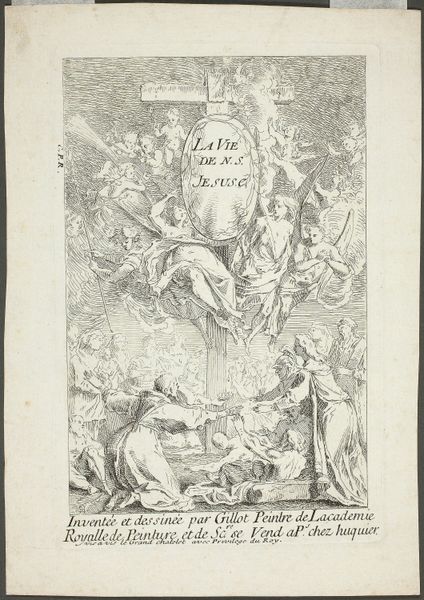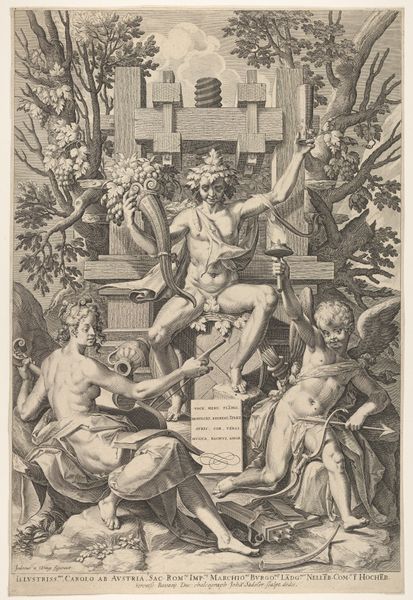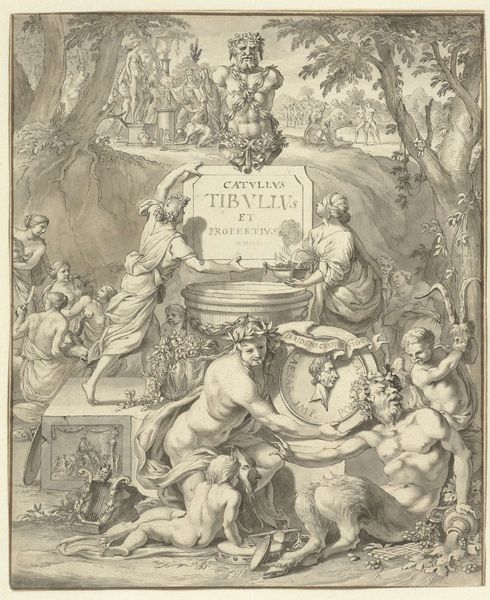
Dimensions: height 157 mm, width 96 mm
Copyright: Rijks Museum: Open Domain
This is Jacobus Baptist's etching "Monument of Willem van Focquenbroch," created around the early 18th century. It commemorates the Dutch poet and playwright Willem van Focquenbroch, who travelled to Elmina, now part of Ghana, where he worked as a clerk for the Dutch West India Company. The monument is densely decorated with allegorical figures, including satyrs and cherubs, typical of the elaborate visual language of the period. There is also a woman who is dressed in classical robes, she is leaning against the monument in a posture that conveys sorrow and mourning. The inscription 'Fumus Gloria Mundi' translates to 'The glory of the world is smoke,' reminding us of the transience of life and fame. Focquenbroch's journey to West Africa and subsequent death there inject a complex layer of colonial history. How does the monument celebrate the poet while eliding his involvement in the Dutch West India Company, and what does it mean to memorialize an individual whose life was entangled with the exploitative structures of colonialism? This work forces us to reckon with the uncomfortable reality of how personal narratives intersect with broader histories of trade and empire.
Comments
No comments
Be the first to comment and join the conversation on the ultimate creative platform.
